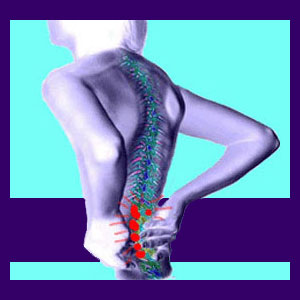
What causes lower back pain? This is a question that we receive often and is also one of the most common patient queries directed at physicians once an acute dorsopathy condition turns into a chronic issue. While it is normal for patients to look for a cookie-cutter answer to this inquiry, it must be noted right from the start that the very concept of a universal cause of back pain is ludicrous.
Pain is not a formula. It is a highly individual experience based on an almost endless variety of possible causative issues. This is the very reason why achieving an accurate back pain diagnosis is so incredibly difficult for most patients to do!
Structurally, What Causes Lower Back Pain?
Almost every back doctor, chiropractor and therapist will support the Cartesian idea that virtually all dorsopathy is a result of some structural back injury, degenerative condition or other anatomical irregularity. Meanwhile, although there is no doubt in these professional’s minds about the validity of this theory, they often can not explain why the diversity of back pain treatments aimed at these same structural conditions almost never actually work!
It does not take a genius to see that something is amiss here.
Add to this the fact that widespread back pain research studies have found little, if any, correlation between the symptomatic expression and a particular structural abnormality and you will have even more doubts about the accuracy of the purely structural model of lower back pain.
In my own experience, I do see cases in which the pain is a direct result of structural issues. However, these events rarely become chronic concerns since they usually respond well to appropriate treatment. This successful resolution certainly does not describe the average case of back pain which seems to go on and on, ad nauseum.
Remember, injuries heal and structural back pain should be resolved once the underlying anatomical issues have been corrected through treatment. If the pain remains, then the idea of a purely structural source seems illogical. Therefore, we move to the next possible source theory.
Alternative Theory on What Causes Lower Back Pain
The non-structural theory of back pain can take some wild turns, depending on who you speak to. Some doctors embrace the emotional overlay theory of pain which is usually off base and pre-supposes an actual structural model at the root cause of suffering.
A far more enlightened view is the oxygen deprivation back pain model developed by the world renowned Dr. John Sarno. This medical approach views chronic pain, in many forms, as being a direct result of a purposeful reduction in blood circulation, and therefore oxygenation, most commonly enacted by the mindbody process. Dr. Sarno calls this condition tension myoneural syndrome, but this name really does not even begin to adequately describe the incredible diversity of painful syndromes which may be created through this diabolical process.
Luckily, when correctly diagnosed, treatment is usually successful and does not even involve the usual risks of back pain therapies, which is a breath of fresh air, for sure.
Exceptions to What Causes Lower Back Pain?
Of course, not every type of pain fits these 2 categories, although most do. Some pain conditions may be due to specific anatomical issues not involving the spine, such as autoimmune concerns, circulatory issues, cancer or other disease process.
It is always advised to seek qualified medical diagnosis for any serious or chronic pain, anywhere in the body, in order to rule out potentially dire causes of symptoms.
It is also advised to learn all you can about back pain and the various symptomatic expressions you suffer from. The more you know, and the more active a role you take in your own treatment, the better your chances for a complete recovery. The more you sit back and do nothing, the better your chances of suffering misdiagnosis, inappropriate and possibly dangerous treatment and eventually, a failed back surgery or 2.




